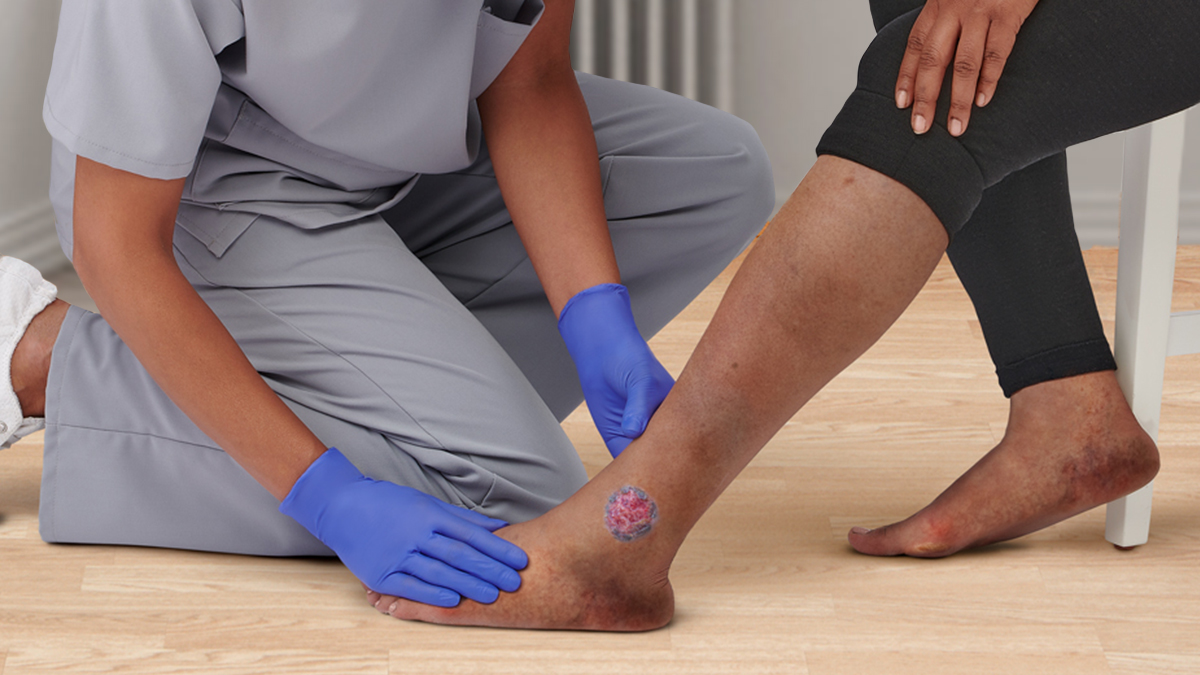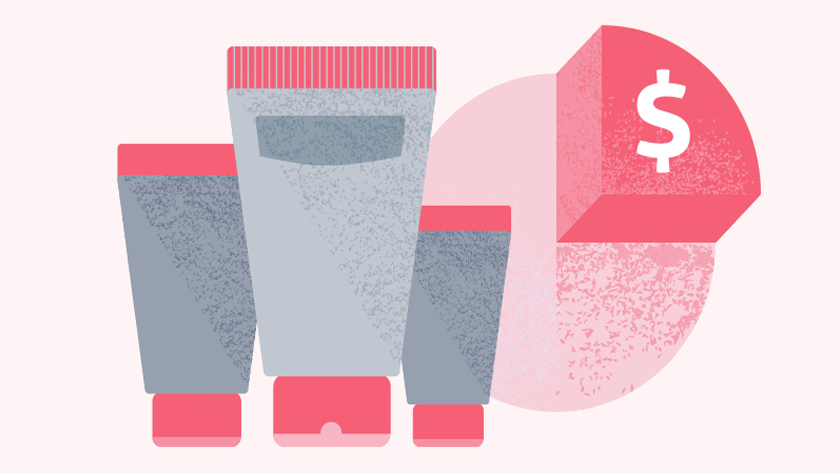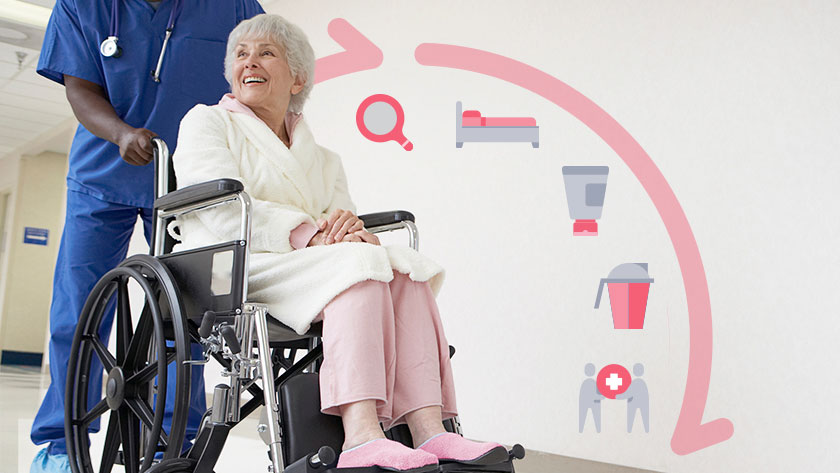Clinical guidelines: 4 ways to help simplify skin and wound care
Improve quality and safety in healthcare with evidence-based guidelines.

You put your heart and soul into caring for your patients and residents in every way you can, but healthcare has experienced a lot of challenges recently. That’s why it’s important to have a solid framework to help your team manage fragile skin and improve outcomes. One of the ways to do this is with clinical practice guidelines.
The Institute of Medicine defines clinical practice guidelines as “statements that include recommendations intended to optimize patient care that are informed by a systematic review of evidence and an assessment of the benefits and harms of alternative care options.”1
Ultimately, these guidelines help reduce care variation and drive efficiency. The most beneficial guidelines have one key feature: “They’re based on new research and new information,” says Amin Setoodeh, Medline VP National Field Sales. “We’re gathering information from organizations such as the National Pressure Injury Advisory Panel, the WOCN Society, the International Skin Tear Advisory Panel and the International Wound Infection Institute.”
The evidence and research come first, then the products that support them, Setoodeh stresses. “Many times, healthcare organizations create a formulary and then tell their clinicians to make them work for the practice. To me, that’s counterproductive,” he says, comparing it to a recipe that needs the right ingredients. “You need to make sure the products you provide your caregivers are designed to support the practice, not vice versa.”
When guidelines follow leading industry organizations and are based on an optimized formulary, caregivers get the knowledge they need to help improve quality and safety in healthcare. Here’s are four ways the right clinical guidelines can help your team simplify your path to care:
1
Bridge the education gap.
“The biggest challenge that we’ve faced with COVID and now coming out of COVID is staffing,” says Melissa Morgan, MSN, RN, CWCN, Medline Clinical Resources Manager. You’ve probably felt a bit like a broken record, repeating protocols and best practice education. “If you have new staff constantly coming into your hospital, your skilled nursing facility, wherever you are, it’s really difficult to keep up with education on the products you use and how they should use it,” Morgan adds.
The frequent turnover becomes a lot less of a hurdle and more of a minor blip when you have your customized clinical guidelines to turn to. Setoodeh likens them to a “secret sauce” that helps simplify skin health management. “So when a caregiver is attending a wound or promoting preventive skin care, they know exactly what product to use for the right patient for the right wound,” he says.
An additional, related benefit, Setoodeh says, is that when caregivers feel supported and confident in their job, they’re more likely to stay “because their job is simplified in a very challenging environment.”
2
Provide a standardized approach to care.
Evidence-based clinical guidelines make it easier to achieve your goals of quality and safety in your healthcare practice no matter who is providing it. “It takes the guesswork out of the clinical process and day-to-day responsibilities and ensures caregivers are initiating the appropriate interventions from the start,” Morgan notes. “Without guidelines, you’ll find variation in practice, not just from clinician to clinician, but from location to location,” she adds. “Then it becomes very difficult to determine what’s working and what’s not working.”
When it comes to standardizing care, your clinical guidelines should be developed for caregivers at all levels. For example, when Medline skin health specialists create clinical guidelines for wound care, they focus on the characteristics of the wound. “The clinician then only has to select the right products based on the wound characteristics, not an actual physical assessment of the wound,” Setoodeh explains.
3
Reduce costs and increase efficiencies.
Besides staffing challenges, doing more with fewer resources is top of mind for most healthcare facilities. “Research shows that when there’s variation in clinical practice, the overall cost of care is severely impacted,” Setoodeh says. Although there are many reasons care variation may increase costs, one of the biggest is that when caregivers aren’t properly educated and guidance is lacking, wounds may be misclassified. That misclassification causes a domino effect that leads to the wrong interventions, longer healing times and higher costs in terms of labor and resources.
Remember, you can have the least expensive products available, but if you’re not using them efficiently, you end up spending a lot more.
Evidence-based clinical guidelines provide a clear roadmap for identifying wound characteristics and selecting proper management strategies. “When you have a clinical process that’s systematic and improves processes, you’re reducing waste and reducing overall cost to care,” Setoodeh stresses. “Ultimately, all of that impacts operational efficiencies and helps improve clinical outcomes and patients experience.”
4
Increase caregiver confidence.
Perhaps one of the most underrated benefits of using smart clinical guidelines is the confidence and empowerment it gives caregivers. “When you have confidence in your process, it helps you select the right product, speed nursing time and use this evidence-based information to have better, more effective conversations with the provider and physicians,” Setoodeh explains. Better communication between frontline care providers and physicians results in better skin and wound outcomes.
Spread the word about your clinical guidelines
Once you’ve got your guidelines ready to go, get the word out. “I would encourage each nursing unit to have a wound care binder on the unit so anyone can reference,” Morgan suggests. “Plus signage around the nursing stations and supply closets.”
Education is also key. “Vendors are the experts on the products they provide, so reach out for staff education,” Morgan adds. Whether that’s through a nursing skills fair or in-servicing, virtual clinical support or a WOCN hotline, you should expect the skin care specialists at your vendor partner to work with you on a strategy to successfully implement the guidelines and educate all staff.
Key takeaway
Evidence-based clinical guidelines help bridge education gaps, standardize care, reduce costs and increase caregiver confidence. They provide your facility with a blueprint to simplify care, which lead to better skin and wound outcomes and a positive overall experience for both caregivers and patients.
References:
-
Institute of Medicine (US) Committee on Standards for Developing Trustworthy Clinical Practice Guidelines; Graham R, Mancher M, Miller Wolman D, et al., editors. Clinical Practice Guidelines We Can Trust. Washington (DC): National Academies Press (US); 2011. 1, Introduction. Available from: https://www.ncbi.nlm.nih.gov/books/NBK209546/




